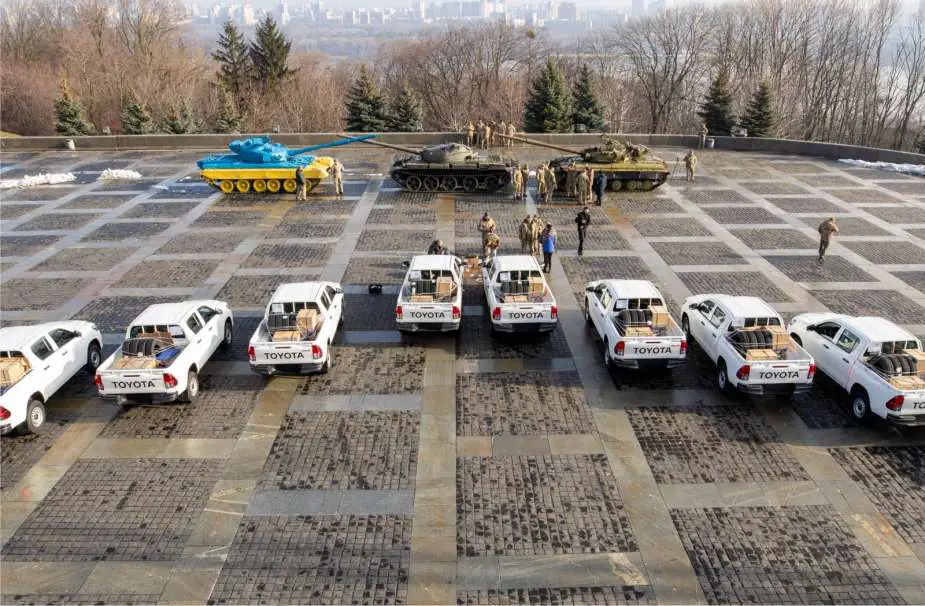United States donates mine clearance equipment to Ukrainian armed forces
The United States, led by Ambassador Bridget A. Brink, has donated over one million dollars in demining equipment to Ukraine. This valuable donation was made to the Ukraine State Special Transport Service on February 13, as announced by Ambassador Brink. Emphasizing the severity of the situation, Ambassador Brink noted the severe impact of Russia's large-scale invasion, stating that over a third of Ukraine is now mined, posing a significant threat to the country's recovery and the safety of its citizens.
Follow Army Recognition on Google News at this link

The United States has donated over one million dollars in demining equipment to Ukraine. (Picture source: X account of the ambassador Bridget A. Brink )
This donation aims to significantly improve Ukraine's demining capabilities, allowing for the deployment of additional demining teams. The goal is to accelerate mine clearance, a crucial step in ensuring the population's safety. Ambassador Brink's statement highlights the urgent need to intensify demining efforts, given the widespread mine contamination that threatens lives and hampers economic and social activities across vast Ukrainian territory.
The situation is indeed alarming, with Prime Minister Denys Shmyhal noting in October that mines pose a risk to about six million Ukrainians, underscoring the magnitude of the challenge the country faces. In response to this pervasive threat, the Ukrainian Ministry of Education has taken proactive measures by announcing in August 2023 the introduction of mandatory mine safety courses for schoolchildren, aimed at educating the young on the dangers and precautions associated with landmines.
Russia has resorted to modern mines, such as the POM-3 mines, which can be dispersed by air and do not require direct contact to explode. These mines are designed to detonate upon detecting vibrations, such as nearby footsteps, making their neutralization extremely dangerous. Additionally, TM-62 mines, used by both Russia and Ukraine, are designed to destroy vehicles by exploding under their weakest armor. Russia has also used anti-vehicle mines with various triggering mechanisms, including magnetic fuses that react to the presence of metal.
The war in Ukraine has seen an unprecedented use of landmines in modern conflict history, with an estimated 174,000 square kilometers of territory contaminated by mines and other unexploded ordnance (UXO), making Ukraine the most mine-contaminated country since World War II. This situation has created what some have already called the "largest post-conflict challenge in modern warfare history," with dangers to civilians unprecedented compared to former conflict zones like Kuwait, Angola, Cambodia, Afghanistan, or the Balkans.
Demining efforts are extremely complex and dangerous, requiring years, or even decades, to clean the territory. Each day of conflict adds a month of demining work, according to industry officials. Unmapped minefields and the presence of UXO further complicate the task, making some areas inaccessible and dangerous for civilians and workers. Humanitarian demining strategies include non-technical surveys to assess contamination levels and technical searches to locate the edges of minefields, using equipment such as ground-penetrating radar and metal detectors.
The need for demining is critical, not only for immediate safety concerns but also for the long-term recovery and rebuilding of the nation. The support of the international community, exemplified by the US donation, is a vital component of Ukraine's path to recovery and decontamination of its territory.
- Hits: 1209
















